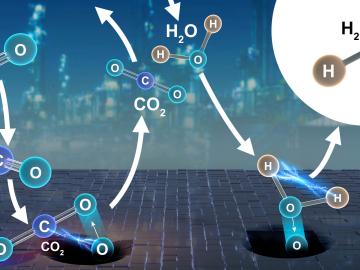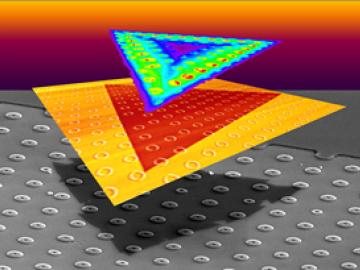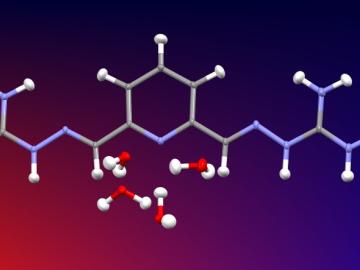
Filter News
Area of Research
- (-) Materials (39)
- (-) Quantum information Science (4)
- Biology and Environment (17)
- Computational Biology (1)
- Computational Engineering (1)
- Computer Science (5)
- Electricity and Smart Grid (1)
- Energy Science (42)
- Fusion and Fission (3)
- Isotopes (3)
- Materials for Computing (10)
- National Security (12)
- Neutron Science (66)
- Nuclear Science and Technology (5)
- Sensors and Controls (2)
- Supercomputing (33)
News Type
News Topics
- (-) Biomedical (5)
- (-) Coronavirus (3)
- (-) Grid (3)
- (-) Neutron Science (22)
- (-) Quantum Science (15)
- (-) Security (1)
- 3-D Printing/Advanced Manufacturing (19)
- Advanced Reactors (2)
- Artificial Intelligence (4)
- Bioenergy (9)
- Biology (4)
- Buildings (3)
- Chemical Sciences (24)
- Clean Water (1)
- Composites (7)
- Computer Science (13)
- Critical Materials (13)
- Cybersecurity (5)
- Energy Storage (26)
- Environment (8)
- Exascale Computing (1)
- Frontier (2)
- Fusion (4)
- High-Performance Computing (2)
- Isotopes (7)
- ITER (1)
- Machine Learning (2)
- Materials (50)
- Materials Science (54)
- Microscopy (18)
- Molten Salt (3)
- Nanotechnology (29)
- National Security (3)
- Nuclear Energy (5)
- Partnerships (8)
- Physics (17)
- Polymers (12)
- Quantum Computing (2)
- Space Exploration (1)
- Summit (1)
- Transportation (10)
Media Contacts

Collaborators at the Department of Energy’s Oak Ridge National Laboratory and U.S. universities used neutron scattering and other advanced characterization techniques to study how a prominent catalyst enables the “water-gas shift” reaction to purify and generate hydrogen at industrial scale.

Scientists at Oak Ridge National Laboratory studying quantum communications have discovered a more practical way to share secret messages among three parties, which could ultimately lead to better cybersecurity for the electric grid

Researchers have pioneered a new technique using pressure to manipulate magnetism in thin film materials used to enhance performance in electronic devices.

Oak Ridge National Laboratory physicists studying quantum sensing, which could impact a wide range of potential applications from airport security scanning to gravitational wave measurements, have outlined in ACS Photonics the dramatic advances in the field.

Scientists have discovered a way to alter heat transport in thermoelectric materials, a finding that may ultimately improve energy efficiency as the materials

A team led by scientists at the Department of Energy’s Oak Ridge National Laboratory explored how atomically thin two-dimensional (2D) crystals can grow over 3D objects and how the curvature of those objects can stretch and strain the

OAK RIDGE, Tenn., May 7, 2019—Energy Secretary Rick Perry, Congressman Chuck Fleischmann and lab officials today broke ground on a multipurpose research facility that will provide state-of-the-art laboratory space

Researchers used neutron scattering at Oak Ridge National Laboratory’s Spallation Neutron Source to investigate the effectiveness of a novel crystallization method to capture carbon dioxide directly from the air.

A team of scientists has for the first time measured the elusive weak interaction between protons and neutrons in the nucleus of an atom. They had chosen the simplest nucleus consisting of one neutron and one proton for the study.

Scientists at the Department of Energy’s Oak Ridge National Laboratory used neutrons, isotopes and simulations to “see” the atomic structure of a saturated solution and found evidence supporting one of two competing hypotheses about how ions come


